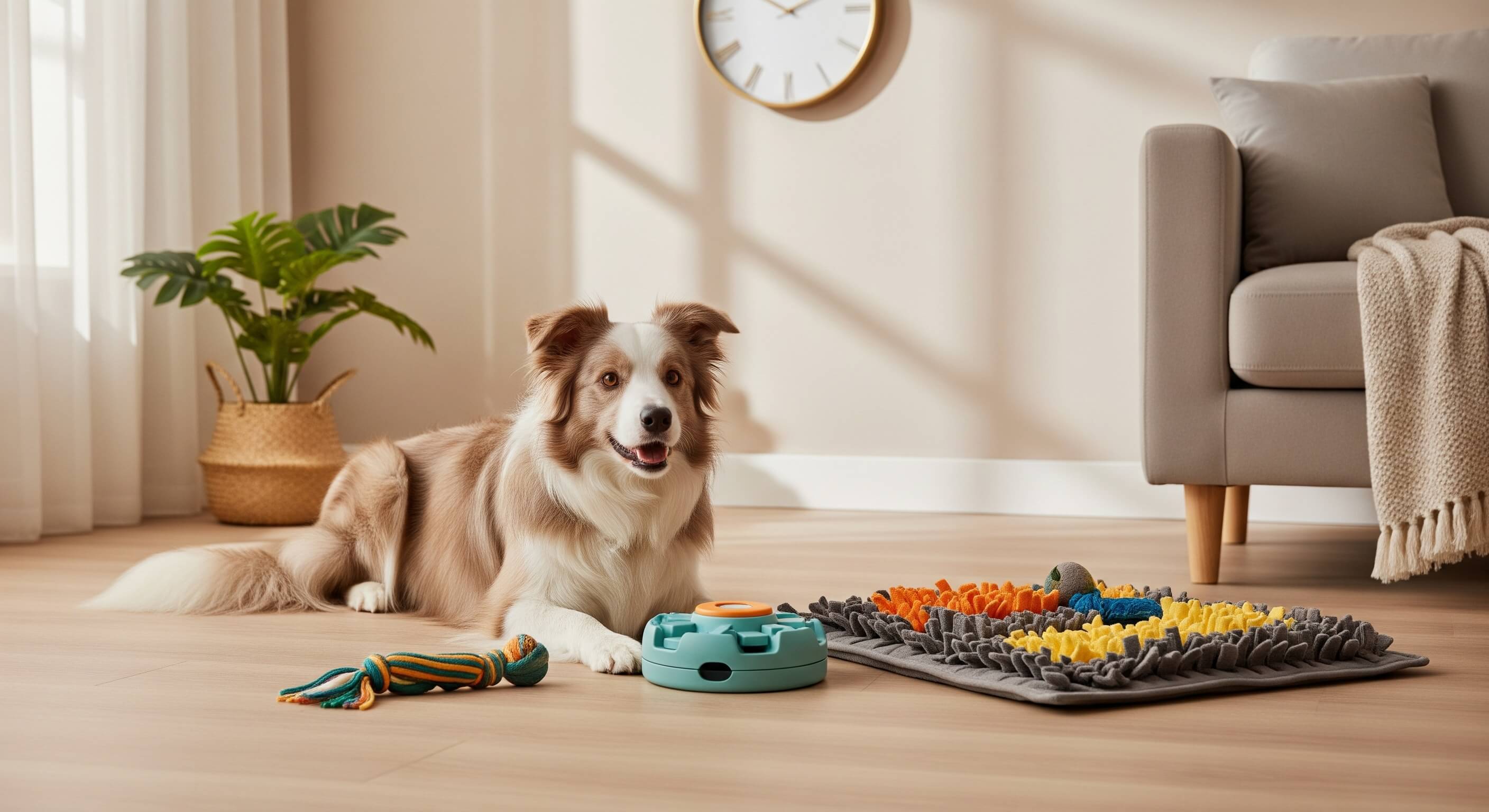Does your Border Collie spin in circles, bark endlessly, or chase their tail like it’s their full-time job? You might be dealing with more than just an energetic dog. These behaviors can be signs of canine OCD, especially in breeds like Border Collies, where herding-related compulsions run deep.
What Is Canine OCD?
OCD (Obsessive Compulsive Disorder) in dogs isn’t about cleanliness—it's a mental health issue. Dogs with OCD repeat certain behaviors that serve no purpose and are difficult to interrupt. In Border Collies, this often shows up as:
- Tail chasing to the point of exhaustion
- Repetitive barking with no obvious trigger
- Fixating on shadows, lights, or reflections
- Compulsive spinning or pacing
Why Are Border Collies Prone to This?
These dogs are born workers. Their intelligence, energy, and herding instincts are legendary—but without enough stimulation or structure, those traits can turn inwards. That’s when natural behaviors like herding morph into obsessive patterns.
“My Collie, Luna, would herd the couch cushions every evening. It started as cute, but then she wouldn’t stop—even growling if we tried to move them.” —Shelley, dog mom in Oregon
Early Signs to Watch For
Spotting the red flags early can make all the difference. Look out for:
- Repetitive movements or vocalizations
- Fixation on specific objects (like shadows or balls)
- Difficulty calming down or sleeping
- Escalating behaviors under stress or boredom
What Triggers OCD-Like Behavior?
- Lack of stimulation (mental and physical)
- Stress or anxiety from change or isolation
- Reinforcement—if a behavior gets attention, it may repeat
- Genetic predisposition in high-drive breeds like Border Collies
Calming Treatments and Management Strategies
1. Increase Mental Enrichment
Boredom is the enemy. Use:
- Interactive puzzle toys
- Sniff work or scent-based games
- New trick training (daily!)
2. Exercise Smart, Not Just Hard
Endless fetch can actually make OCD worse. Instead, mix it up with:
- Leash walks in new areas
- Agility or rally obedience
- Free-shaping games (let your dog figure things out!)
3. Limit Triggers
Manage the environment:
- Cover reflective surfaces or close blinds if light/shadow fixations occur
- Use background noise to mask outdoor sounds
- Rotate toys to avoid obsessive attachment
4. Behavior Modification
Work with a positive reinforcement trainer to replace compulsions with healthy alternatives. Teach cues like:
- “Settle” or “Place” to encourage relaxation
- “Look at me” for redirection
5. Consult a Vet or Behaviorist
If behaviors escalate or your dog seems distressed, professional help is essential. Vets may prescribe anti-anxiety medications alongside training plans.
Top Products That Help
- KONG Extreme – Long-lasting chew engagement
- Outward Hound Hide-A-Toy – Great for scent and retrieval work
- LickiMat – Encourages calm licking behaviors
- Thundershirt – Gentle pressure to soothe anxiety
What NOT to Do
- Don’t punish compulsive behavior—it’s not disobedience
- Don’t ignore signs of distress or injury from compulsions
- Don’t overstimulate—balance high-energy games with decompression time
Final Thoughts: Support Over Suppression
Managing OCD in a Border Collie isn’t about shutting them down—it’s about meeting their emotional needs in a structured, compassionate way. With time, patience, and the right tools, your Collie can find healthier ways to be the brilliant dog they were born to be.
Love, understanding, and enrichment go a long way. You’ve got this!
Frequently Asked Questions (FAQs)
1. What is the difference between normal herding behavior and OCD in Border Collies?
2. Can tail chasing in Border Collies be dangerous?
3. How do I calm my Border Collie during a compulsive episode?
4. Do Border Collies grow out of compulsive behaviors?
5. Can food or diet affect compulsive behaviors?
6. Should I see a vet if my Border Collie shows compulsive behavior?

About SniffnTail
SniffnTail is your go-to destination for everything pets. From helpful advice, tips, and insights to thoughtfully selected products and resources, we’re here to support pet owners at every stage of their journey. Whether you're caring for a playful pup, a wise old cat, or anything in between, SniffnTail offers tools and knowledge to make pet parenting easier and more joyful.
Related Articles
 Training & Behavior • 5 mins Read
Training & Behavior • 5 mins ReadHow Much Exercise Does Your Dog Need? A Complete Guide for Dog Owners
Whether you're a new pet parent or an old dog hand, one of the most frequently asked (and important) questions is: How much exercise does my dog require? Similar to humans, dogs need ongoing exercise in order to remain happy, healthy, and mentally stimulated.
 Training & Behavior • 5 mins Read
Training & Behavior • 5 mins ReadWhy Microchipping Matters More Than Ever
Picture the devastation of losing your dog — only to discover there's no possible way for someone to recognize and return your pet. Microchipping is where that ends. As a permanent, foolproof form of pet identification, microchipping your dog greatly improves the possibility of safe return should they ever get lost or stolen.
 Training & Behavior • 7 min read
Training & Behavior • 7 min readScent Training for Dogs: Where & How to Start
Discover how to start scent training for dogs at home with fun, expert-approved tips for beginners, puppies, and future sniffer dogs.

